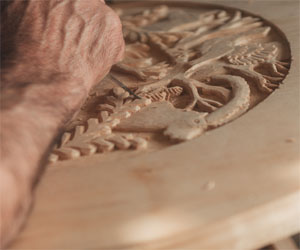


Crafting Beauty From The Ordinary

Woodworking has long been recognized as an art form that elevates humble pieces of lumber into exquisite works of art. The magic lies in the transformation of raw, unassuming wood into intricate, awe-inspiring creations. In this article, we delve into the world of woodworking and explore how it turns lumber into art.
The Raw Canvas: Lumber, in its natural state, might not appear to be an obvious choice for artistic expression. However, it provides an excellent blank canvas for creativity. Every piece of wood is unique, with its own grain patterns, colors, and character. It's these natural variations that add depth and personality to the final piece of art. A skilled woodworker recognizes and harnesses the potential in each piece of wood, selecting the right type and cut for the intended creation.
Melding Form And Function: Woodworking blends form and function seamlessly. It's not just about creating a beautiful object; it's about making something that is also practical and useful. Furniture, for instance, should be comfortable and functional, while also serving as a stunning piece of decor. Woodworkers carefully consider the design, shape, and functionality of their creations, ensuring they harmonize with the artistic vision.
Attention To Detail: One of the hallmarks of transforming lumber into art is the unwavering attention to detail. Woodworkers invest time and precision in every aspect of the project. From selecting the right joinery techniques to meticulously sanding and finishing, no detail is too small to be overlooked. This dedication results in a level of craftsmanship that elevates a simple piece of lumber into a masterpiece.
Creativity Unleashed: Woodworking is not confined by traditional boundaries. It encourages innovation and creativity. A piece of lumber can become a unique sculpture, an intricately designed carving, or a functional object of beauty. Woodworkers draw inspiration from a myriad of sources, and their creativity knows no bounds. The result is a diverse world of wooden art, where imagination is the only limit.
Respecting The Grain: The grain of the wood is the artist's guide, and it's essential to respect it. Woodworkers work with the grain, allowing it to dictate the direction of the project. This harmonious collaboration between artist and material ensures that the final creation is in harmony with nature. The grain becomes an integral part of the art, enhancing its character and allure.
A Labor Of Love: Transforming lumber into art is not merely a job; it's a labor of love. Woodworkers pour their hearts and souls into their projects, investing time, effort, and dedication. Each piece of wood is carefully selected, each cut is deliberate, and each finishing touch is imbued with passion. This love for the craft shines through in the final product.
Transforming lumber into art is a testament to the creativity and skill of woodworkers. It's a journey that elevates ordinary lumber into extraordinary creations. Through a combination of talent, attention to detail, and respect for the medium, woodworking showcases the beauty of the natural world and the potential to transform it into art. Each piece becomes a unique expression of the woodworker's vision, a work of art that breathes life into a piece of lumber.
From Seed To Harvest
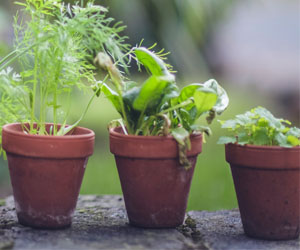 Soil Preparation
Soil Preparation
Prepare the soil by ensuring it is well-draining and rich in organic matter. Herbs generally prefer slightly alkaline soil with good aeration. To improve soil quality, incorporate compost or well-rotted organic matter.
Planting Techniques
When planting herbs, pay attention to spacing. Different herbs have varying requirements for space between plants. Proper spacing allows air circulation and minimizes the risk of disease.
Watering And Drainage
Watering is a critical aspect of herb growing. Most herbs prefer well-drained soil, so avoid overwatering, which can lead to root rot. Water deeply but less frequently, allowing the soil to dry out between watering sessions.
Sunlight Requirements
Herbs love sunlight, so make sure your garden receives at least 6 to 8 hours of direct sunlight per day. If you're growing herbs indoors, consider providing supplemental light with grow lights.
Pruning And Pinching
Regular pruning and pinching are key techniques for encouraging bushier growth and better flavor. Pinching the tips of the branches or cutting back leggy growth can stimulate new growth and prevent the herbs from becoming too woody.
The Fusion Of Tradition And Innovation
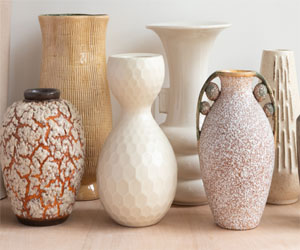 Ceramics, an art form with a history dating back millennia, has taken on new life in the contemporary art world. Contemporary ceramics represent a dynamic fusion of traditional techniques and innovative ideas, resulting in a breathtaking array of artistic expressions. This revitalized craft has garnered international attention and a dedicated following among artists and collectors.
Ceramics, an art form with a history dating back millennia, has taken on new life in the contemporary art world. Contemporary ceramics represent a dynamic fusion of traditional techniques and innovative ideas, resulting in a breathtaking array of artistic expressions. This revitalized craft has garnered international attention and a dedicated following among artists and collectors.
Breaking Boundaries: Contemporary ceramics are marked by a fearless embrace of experimentation. Artists working in this medium are unafraid to push the boundaries of traditional ceramics, often combining clay with other materials such as metals, glass, or textiles. The use of digital technology has enabled artists to design intricate patterns and precise shapes, opening up entirely new possibilities.
Diverse Styles And Themes: One of the most exciting aspects of contemporary ceramics is the diversity of styles and themes explored by artists. From minimalist and functional pottery to abstract and conceptual sculptures, contemporary ceramics encompass a wide range of artistic expressions. Some artists delve into social and political commentary, while others focus on the beauty of the natural world. This diversity reflects the vast creative potential of ceramics in the hands of contemporary artists.
Cross-Cultural Influences: Contemporary ceramics draw inspiration from a global palette. Artists often blend influences from various cultures and traditions, leading to cross-cultural dialogues through their work.
Crafting Your Way To Inner Peace
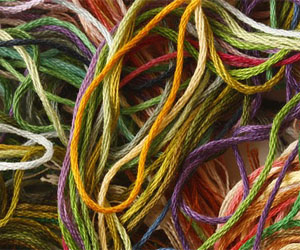 Handmade serenity is a form of active meditation. As you immerse yourself in your craft, you enter a state of flow, where time seems to stand still, and you're completely absorbed in the process. This meditative quality of crafting can be profoundly calming and is akin to mindfulness meditation, a practice proven to reduce anxiety and promote mental and emotional well-being.
Handmade serenity is a form of active meditation. As you immerse yourself in your craft, you enter a state of flow, where time seems to stand still, and you're completely absorbed in the process. This meditative quality of crafting can be profoundly calming and is akin to mindfulness meditation, a practice proven to reduce anxiety and promote mental and emotional well-being.
The tactile nature of handmade creations has a soothing effect on your senses. Feeling the textures, seeing the colors, and manipulating the materials can be a sensory experience that grounds you in the moment. Whether you're kneading dough for homemade bread, shaping clay into pottery, or sewing fabric into a quilt, your senses come alive, enhancing your connection to the world around you.
Moreover, handmade serenity is about the sense of accomplishment that comes with completing a project. Seeing your creations come to life can be incredibly rewarding, instilling a sense of pride and purpose. It's a tangible representation of your creativity and effort, and this feeling of achievement can boost your self-esteem and sense of self-worth.
Crafting also allows you to take control of your surroundings. You can make your home more inviting and cozy with handmade decor, such as quilts, paintings, or handcrafted furniture. These pieces carry a personal touch that can transform your living space into a sanctuary of serenity, providing a refuge from the chaos of the outside world.

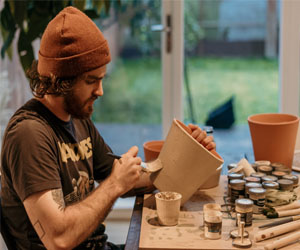

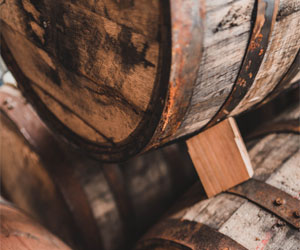


The Magical Transformation Behind The Brew
 The Fermentation Process: Fermentation begins when the wort (unfermented beer) is transferred to a fermentation vessel, and yeast is introduced. The yeast starts consuming the sugars, breaking them down into alcohol, carbon dioxide, and a range of flavor compounds. During this process, the temperature and oxygen levels are carefully controlled to achieve the desired characteristics for the beer style.
The Fermentation Process: Fermentation begins when the wort (unfermented beer) is transferred to a fermentation vessel, and yeast is introduced. The yeast starts consuming the sugars, breaking them down into alcohol, carbon dioxide, and a range of flavor compounds. During this process, the temperature and oxygen levels are carefully controlled to achieve the desired characteristics for the beer style.
Primary And Secondary Fermentation: The initial fermentation, called primary fermentation, typically lasts one to two weeks. Afterward, some beer styles may undergo a secondary fermentation or conditioning phase. In secondary fermentation, the beer may be transferred to a different vessel, such as a secondary fermenter or barrels, to develop further flavors and clarity.
Flavor Development: The fermentation process is where the beer's flavor is largely determined. Yeast produces a wide variety of compounds, including alcohols, esters, and phenols, which contribute to the aroma and taste of the beer. For example, esters can impart fruity notes like banana or apple, while phenols may introduce subtle smoky or spicy characteristics.
Alcohol Production: The yeast's primary job is to convert sugars into alcohol. Ethanol, the type of alcohol found in beer, is the result of this process. The level of alcohol in the final beer depends on factors such as the type and amount of malt used and the yeast's alcohol tolerance.
Carbonation: In addition to alcohol, fermentation produces carbon dioxide, which is the source of beer's effervescence.
Crafting Your Way To Inner Peace
 Handmade serenity is a form of active meditation. As you immerse yourself in your craft, you enter a state of flow, where time seems to stand still, and you're completely absorbed in the process. This meditative quality of crafting can be profoundly calming and is akin to mindfulness meditation, a practice proven to reduce anxiety and promote mental and emotional well-being.
Handmade serenity is a form of active meditation. As you immerse yourself in your craft, you enter a state of flow, where time seems to stand still, and you're completely absorbed in the process. This meditative quality of crafting can be profoundly calming and is akin to mindfulness meditation, a practice proven to reduce anxiety and promote mental and emotional well-being.
The tactile nature of handmade creations has a soothing effect on your senses. Feeling the textures, seeing the colors, and manipulating the materials can be a sensory experience that grounds you in the moment. Whether you're kneading dough for homemade bread, shaping clay into pottery, or sewing fabric into a quilt, your senses come alive, enhancing your connection to the world around you.
Moreover, handmade serenity is about the sense of accomplishment that comes with completing a project. Seeing your creations come to life can be incredibly rewarding, instilling a sense of pride and purpose. It's a tangible representation of your creativity and effort, and this feeling of achievement can boost your self-esteem and sense of self-worth.
Crafting also allows you to take control of your surroundings. You can make your home more inviting and cozy with handmade decor, such as quilts, paintings, or handcrafted furniture. These pieces carry a personal touch that can transform your living space into a sanctuary of serenity, providing a refuge from the chaos of the outside world.
Cultivating Wine's Essence
 Pruning: Pruning is a critical aspect of vineyard management, as it shapes the vines and influences the quality of the fruit. Pruning helps control the yield of the vine, ensuring that it produces a balanced crop with optimal grape ripeness. The timing and precision of pruning are essential to the health of the vines and the quality of the grapes.
Pruning: Pruning is a critical aspect of vineyard management, as it shapes the vines and influences the quality of the fruit. Pruning helps control the yield of the vine, ensuring that it produces a balanced crop with optimal grape ripeness. The timing and precision of pruning are essential to the health of the vines and the quality of the grapes.
Pest And Disease Control: Protecting the vineyard from pests and diseases is essential for a successful harvest. Integrated pest management techniques are often employed, which may include the use of natural predators, organic pesticides, or careful monitoring of vine health.
Harvesting: The timing of the grape harvest is critical, and it varies depending on the type of wine being produced. For sparkling wines or crisp white wines, grapes may be picked early for high acidity.